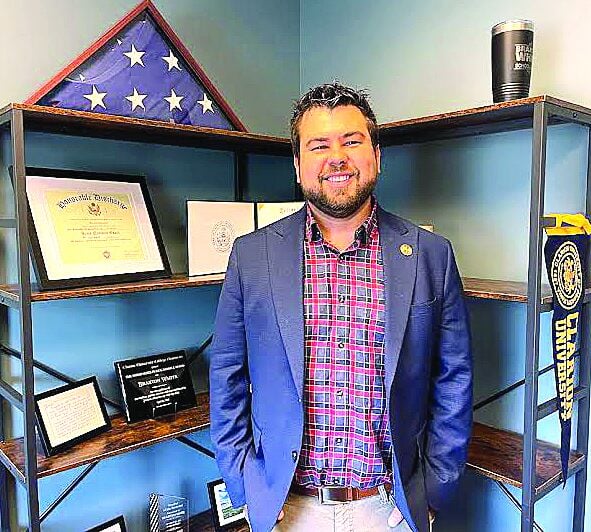Report on Inspire Early Education’s Contribution to Sustainable Development Goals
Introduction and Strategic Expansion
Inspire Early Education, a U.S.-based entity with international affiliations under the French parent company Grandir, has rebranded eight early childhood centers in Missouri. This initiative is part of a strategic effort to lead the early childhood education sector in the St. Louis market by implementing an enhanced curriculum and operational model. This expansion and rebranding directly align with several key United Nations Sustainable Development Goals (SDGs), particularly those focused on education, health, and economic growth.
Alignment with SDG 4: Quality Education
The core of Inspire Schools’ mission is the advancement of SDG 4: Quality Education, with a specific focus on Target 4.2, which aims to ensure all children have access to quality early childhood development, care, and pre-primary education.
- Implementation of the Creative Curriculum: The centers have adopted the Creative Curriculum, a framework designed to provide intentional, play-based learning. This approach moves beyond traditional daycare to establish a structured educational environment for children from infancy through kindergarten.
- Holistic Development: The curriculum is comprehensive, integrating activities such as music, art, literacy, yoga, and sign language to foster well-rounded development.
- Early Skill Acquisition: A key objective is to equip children with foundational skills necessary for primary school. This includes developing fine motor skills for writing and promoting early numeracy, ensuring children are well-prepared for kindergarten.
- Enhanced Learning Environments: The schools emphasize sensory-based learning, particularly through outdoor activities, which is critical for cognitive development in toddlers and young children.
Contributions to SDG 3: Good Health and Well-being
Inspire Schools’ operational standards actively support SDG 3: Good Health and Well-being by promoting healthy lifestyles from the earliest stages of life.
- Nutritional Planning: The centers utilize a four-week rotating menu to ensure dietary diversity. This system promotes healthy eating habits by consistently introducing children to new foods.
- Emphasis on Healthy Foods: Menus prioritize fresh fruits and frozen vegetables, contributing directly to the physical health and proper development of young children.
- Physical Activity Integration: Extracurricular activities, including gymnastics, soccer, and dance, are integrated into the weekly schedule, promoting physical fitness and well-being.
Broader Sustainable Development Impacts
- SDG 8 (Decent Work and Economic Growth): By providing high-quality, reliable early childhood education and care, Inspire Schools enables parents and guardians to participate more fully in the workforce, thereby contributing to local economic growth.
- SDG 10 (Reduced Inequalities): Access to quality pre-primary education is a fundamental tool for reducing long-term societal inequalities. By providing a strong educational foundation, the program helps to ensure that children are better prepared for future academic success, regardless of their background.
- SDG 17 (Partnerships for the Goals): The company’s international structure, with a parent company operating in France, Germany, and England, represents a global partnership focused on elevating standards in early childhood education across borders.
Rebranded Missouri Locations
- Inspire St. Peters/O’Fallon
- Inspire Lake St. Louis North
- Inspire Troy
- Inspire Central O’Fallon
- Inspire Lake St. Louis South
- Inspire O’Fallon
- Inspire St. Charles
- Inspire St. Peter’s East
Analysis of Sustainable Development Goals in the Article
1. Which SDGs are addressed or connected to the issues highlighted in the article?
The article primarily addresses issues related to the following Sustainable Development Goals (SDGs):
- SDG 4: Quality Education: The central theme of the article is the provision of high-quality early childhood education. It describes how Inspire Early Education centers are rebranding former daycare facilities to implement a structured “Creative Curriculum” that goes “beyond normal day care expectations.” The goal is to enhance learning for children from infancy through kindergarten, focusing on developmental skills to prepare them for primary school.
- SDG 2: Zero Hunger: The article connects to this goal through its focus on child nutrition. It explicitly states that “healthy eating is also promoted” at the Inspire school. The provision of a structured, varied, and nutritious meal plan directly contributes to ending malnutrition in young children.
- SDG 3: Good Health and Well-being: By promoting healthy eating habits from a very young age, the school contributes to the long-term health and well-being of children. The article mentions a menu with “fresh fruit” and “frozen vegetables” on a “four-week rotation,” which helps establish healthy dietary patterns and prevent nutrition-related health issues.
2. What specific targets under those SDGs can be identified based on the article’s content?
Based on the article’s content, the following specific SDG targets can be identified:
-
Target 4.2: Ensure that all girls and boys have access to quality early childhood development, care and pre-primary education so that they are ready for primary education.
The article directly supports this target by describing the Inspire school’s mission to provide a curriculum that prepares children for the next stage of their education. School Director Addison Baker states that the goal is to give children “a leg up” so that “when they head into kindergarten, they’re almost a leg up — the kids can count 1 to 50, they know how to write their name already.” This demonstrates a clear focus on readiness for primary education through quality early childhood development. -
Target 2.2: By 2030, end all forms of malnutrition… and address the nutritional needs of… children.
The article highlights the school’s effort to address the nutritional needs of young children. It details a specific food program: “Our menu is on a four-week rotation, so they don’t eat the same thing for lunch for an entire month.” The emphasis on serving “fresh fruit” and “frozen vegetables” is a direct action to combat poor nutrition and ensure children receive healthy meals.
3. Are there any indicators mentioned or implied in the article that can be used to measure progress towards the identified targets?
Yes, the article mentions and implies several indicators that can be used to measure progress:
-
For Target 4.2 (Quality Early Childhood Education):
- Implementation of a developmentally appropriate curriculum: The article explicitly names the “Creative Curriculum” which is “age-specific, building on mastered skills in a developmentally appropriate manner.” This serves as an indicator of the quality and structure of the education provided.
- Developmental outcomes in children: The article implies a key performance indicator is the skill level of children entering kindergarten. The claim that children will be able to “count 1 to 50” and “write their name” before kindergarten are measurable outcomes that indicate readiness for primary education.
- Participation in organized learning: The rebranding and operation of eight schools in Missouri and others in Illinois indicate an increase in the number of children participating in organized, curriculum-based learning one year before primary school entry.
-
For Target 2.2 (End Malnutrition):
- Provision of diverse and nutritious meals: The article provides a specific, measurable indicator of nutritional quality through its description of the meal plan. The “four-week rotation” of the menu and the inclusion of “fresh fruit” and “frozen vegetables” can be tracked to measure the diversity and healthiness of the food provided to children.
4. Summary Table of SDGs, Targets, and Indicators
| SDGs | Targets | Indicators |
|---|---|---|
| SDG 4: Quality Education | Target 4.2: Ensure access to quality early childhood development, care, and pre-primary education. |
|
| SDG 2: Zero Hunger | Target 2.2: End all forms of malnutrition and address the nutritional needs of children. |
|
| SDG 3: Good Health and Well-being | Target 3.4: Promote health and well-being through prevention. |
|
Source: stlpr.org







